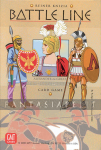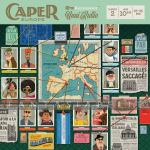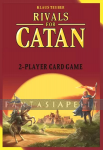7 Wonders - Duel on erityisesti kahdelle pelaajalle suunniteltu versio suuren suosion saavuttaneesta 7 Wonders lautapelistä. Pelissä käytetään osittain 7 Wonders lautapelistä tuttuja elementtejä, mutta peli on kuitenkin täysin itsenäinen vain kahdelle pelaajalle kehitetty peli.
7 Wonders Duel: Pantheon on pelin lisäosa, joka tuo peliin muinaisten kansojen jumalat! Käytä jumalten voimia pelin manipuloimiseen.
Vaatii 7 Wonders Duel perusversion.
Enki! Isis! Minerva! Tanit! Zeus! Add a divine element to your games of 7 Wonders: Duel with the Pantheon expansion!
In the award-winning card game 7 Wonders Duel, you compete against another player to build the greatest city of the ancient Mediterranean world by constructing a variety of temples, taverns, workshops, schools, and stables. These great citites are also are home to incredible Wonders: the Mausoleum of Halicarnassus, the Great Pyramid of Giza, the Colossus at Rhodes, and more. Any city you build combines the best of Greece, Egypt, Phoenicia, Rome, and Persia, all built out of stone, wood, glass, and papyrus. People pack your city's streets, houses, and theatres, but the divine element that was so pervasive in those civilizations has been missing from the game. Until now.
7 Wonders Duel: Pantheon brings the gods of the ancient world into 7 Wonders Duel. You can now seek the favor of deities from five different ancient cultures and bring them together to watch over your city. You might even build your patron gods and goddesses lavish temples to dwell in, or dedicate to them one of the expansion’s two new Wonders.
Divine Natures
Ancient Greeks and Romans believed that in order to receive a divine blessing, you had to give the god something in return, some sort of offering or vow. So it goes with the Pantheon expansion: if you want a god’s favor, you have to make an offering. During Age I, you collect Mythology tokens, which allow you to choose which deities have a place in the Pantheon, and Offering tokens, which help you court those deities’ attention. Then, in Ages II and III, you can activate a god or goddess in the Pantheon instead of taking a card from the structure. To do so, you pay whatever that god or goddess demands from you in offerings and place him or her next to your city.
With Isis on your side, you can use a card from the discard pile to construct one of your Wonders for free. Zeus, whose nod determines what happens and what does not, enables you to discard any single card from the structure that you want, as well as any Mythology or Offering tokens on it. The Phoenician goddess Tanit, whose people were renowned for trade, fills your coffers with twelve pieces of gold. Enki, the Sumerian god of crafts, technology, and creation, lets you choose one of two progress tokens. Minerva’s ability to keep the conflict pawn from entering your territory may not instantly bring you victory, but it can save you from military defeat.
Ritual Spaces
Age III introduces another aspect of ancient religion: the ritual space. When playing with Pantheon, instead of incorporating three Guilds into the card structure, you add in three Grand Temples. Each Grand Temple belongs to a different Mediterranean culture. If you have the favor of a god or goddess from that culture, you can build the temple for free. For example, having Isis by your side enables you to build the Egyptian temple; with Enki, you can build the Mesopotamian one.
A single Grand Temple is worth five victory points, but two together are worth twelve, and if you can manage to build three in your city, you’ll earn twenty-one victory points for them. This echoes the polytheism common across the ancient Mediterranean, where many cultures borrowed deities from each other. Isis became popular in Imperial Rome, Aphrodite is very similar to Ishtar and Astarte, Minerva is in many ways a Roman version of the Greek Athena. Moreover, focusing too much on one god and neglecting the others was thought to lead to trouble. In Pantheon, therefore, activating multiple gods and creating a city full of Grand Temples to them is among the best ways to achieve victory.
Create Your Pantheon
From the time it was founded in the third century BCE, Alexandria’s people worshipped Egyptian, Roman, and Greek gods. A native of that legendary city might even visit a Greek temple one day, then an Egyptian shrine the next. Roman soldiers in Greece and the Near East worshipped the native gods of the area they occupied alongside their own gods. As you choose and activate gods in Pantheon, you’ll be emulating these syncretic religious traditions and echoing the history of the ancient Mediterranean, where numerous cultures came together and combined to form something truly great.
• A must-have expansion for the award-winning card game 7 Wonders Duel
• Enables players to recruit patron gods and goddesses for their cities
• Introduces Grand Temples which transform gameplay in Age III
• Draws upon ancient Greek, Roman, Egyptian, Phoenician, and Babylonian religions
• Features two new Wonders
Contents:
* One Pantheon board
* Fifteen Divinity cards, five grand temple cards, and one Gate card
* Two Wonder cards
* Seventeen tokens
* One Minerva pawn
* One Score notepad
* One Rulebook
* One Game Aid
Säännöt suomeksi, ruotsiksi, norjaksi ja tanskaksi.



























